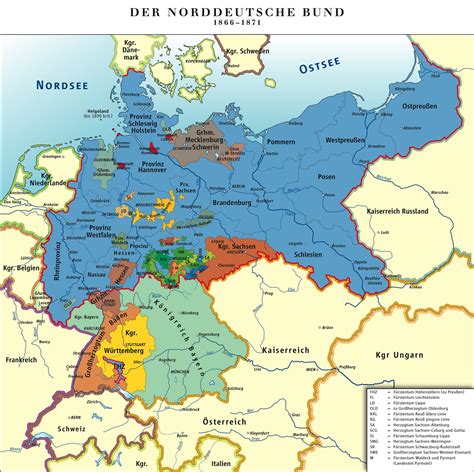Explore Taiwan’s history from early inhabitants to democratic transition. Learn about Dutch, Japanese, and Han Chinese influences.
Early Inhabitants of Taiwan
Contents
Taiwan, an island located off the southeastern coast of China, has a rich and diverse history, with evidence of human habitation dating back tens of thousands of years. Archaeological discoveries have unearthed tools, pottery, and other artifacts that provide insights into the earliest indigenous people of Taiwan. These early inhabitants are believed to have arrived on the island during the late Neolithic period and were part of the Austronesian ethnic group.
The Austronesian people are thought to have originated in Taiwan before spreading out to other parts of Southeast Asia and the Pacific Islands. Their migration is one of the largest in history, and their descendants can be found across a vast geographic area, from Madagascar in the west to Easter Island in the east.
These early inhabitants of Taiwan were skilled in agriculture and seafaring, establishing communities along the coastline and living in harmony with the natural environment. They developed unique cultural traditions and a complex societal structure, leaving a lasting impact on the cultural identity of modern-day Taiwan.
Their legacy lives on in the form of indigenous tribes that still inhabit the island today, preserving their heritage and traditions amidst the modernization of Taiwan. The early inhabitants of Taiwan played a crucial role in shaping the island’s history and continue to be an integral part of its diverse cultural landscape.
Arrival of the Han Chinese
According to historical records, the Han Chinese began arriving in Taiwan during the 17th century. With the Dutch already on the island, the Han Chinese migrants were initially drawn to Taiwan due to its strategic location for trade and commerce. The influx of Han Chinese immigrants brought about significant changes to the island, including the establishment of new agricultural practices, trade networks, and social structures.
The arrival of the Han Chinese also led to conflicts with the indigenous peoples of Taiwan, as the newcomers sought to expand their settlements and assert their influence over the island. The resulting clashes and tensions between the Han Chinese and the indigenous groups had a lasting impact on the cultural and demographic landscape of Taiwan.
As the Han Chinese population continued to grow in Taiwan, the island became an important hub for trade and economic activities, further shaping its development and future trajectory. The influence of the Han Chinese settlers and their integration with the local population played a significant role in shaping the history and identity of Taiwan.
Over time, the Han Chinese presence in Taiwan became more deeply entrenched, leading to the establishment of permanent communities and the gradual assimilation of the island into larger networks of Chinese culture and society. The legacy of the arrival of the Han Chinese continues to be felt in Taiwan to this day, influencing everything from language and customs to governance and political dynamics.
Taiwan Under Dutch Rule
Taiwan Under Dutch Rule
During the period of 1624 to 1662, Taiwan was under Dutch rule. The Dutch East India Company established a colonial foothold in Taiwan, primarily for trade purposes. The Dutch occupation resulted in significant changes to the island’s social, economic, and political landscape. They also introduced Christianity to the local population and left behind a legacy that continues to influence Taiwan to the present day.
Impact on Indigenous People
The Dutch engaged in trade with the indigenous people of Taiwan, but also enforced strict control over them. They established forts and trading posts to secure their economic interests, often leading to conflicts with the local tribes. The indigenous population suffered from the imposition of Dutch authority and the introduction of new diseases, leading to a decline in their population and cultural influence.
Economic and Cultural Influence
Under Dutch rule, Taiwan became a center of trade and commerce in the region. The Dutch developed the island’s infrastructure, established new agricultural practices, and promoted trade with neighboring countries. They also introduced new crops and technologies, which had a lasting impact on Taiwan’s economy and society. Additionally, the Dutch influence is evident in the architecture and urban planning of cities like Tainan, where remnants of their colonial legacy can still be seen.
Legacy and Historical Significance
The period of Dutch rule in Taiwan left a lasting imprint on the island’s history. The introduction of Christianity, the development of trade networks, and the impact on indigenous cultures are all enduring legacies of this period. The Dutch era in Taiwan serves as a critical chapter in the island’s journey towards modernization and its place in the global community.
Japanese Colonization of Taiwan
The Japanese colonization of Taiwan began in 1895 after the Qing Dynasty ceded Taiwan to Japan in the Treaty of Shimonoseki, following the First Sino-Japanese War. This marked the start of a fifty-year period of Japanese rule over the island.
During this time, the Japanese implemented various policies and reforms in Taiwan, including land reforms, infrastructure development, and modernization efforts. They also established an education system and promoted Japanese language and culture, leading to significant changes in Taiwanese society.
However, the Japanese colonial administration also faced resistance from the local population, leading to various uprisings and protests. The colonial government responded with harsh suppression and control measures, which left a lasting impact on the Taiwanese people.
Despite the challenges and hardships faced during the Japanese colonial period, it also brought about significant changes and advancements in Taiwan’s economy, education, and infrastructure. Many of these developments laid the foundation for Taiwan’s future progress and development in the years to come.
Overall, the Japanese colonization of Taiwan left a complex legacy on the island, shaping its identity and society in profound ways that continue to resonate to this day.
Taiwan’s Transition to Democracy
Taiwan’s transition to democracy is a remarkable and inspiring chapter in the island’s history. After years of authoritarian rule, Taiwan underwent a gradual process of democratization, marked by the lifting of martial law, the emergence of political parties, and the holding of free and fair elections. This period of transformation began in the 1980s and culminated in the election of the first non-Kuomintang president, Chen Shui-bian, in 2000.
The transition to democracy in Taiwan was a hard-won victory, achieved through the efforts of activists, intellectuals, and ordinary citizens who fought for political reform and human rights. The Taiwanese people’s determination and resilience in the face of oppression and censorship paved the way for a more open and inclusive society.
One of the key milestones in Taiwan’s journey to democracy was the Sunflower Movement of 2014, a student-led protest against a proposed trade agreement with China. The movement galvanized widespread support for greater transparency and accountability in governance, and brought to the forefront issues of national sovereignty and identity.
Today, Taiwan stands as a vibrant democracy in East Asia, known for its freedom of speech, independent judiciary, and peaceful transition of power. The island’s experience serves as a source of inspiration for those striving for democratic reform in other parts of the world, and as a testament to the enduring spirit of freedom and democracy.













